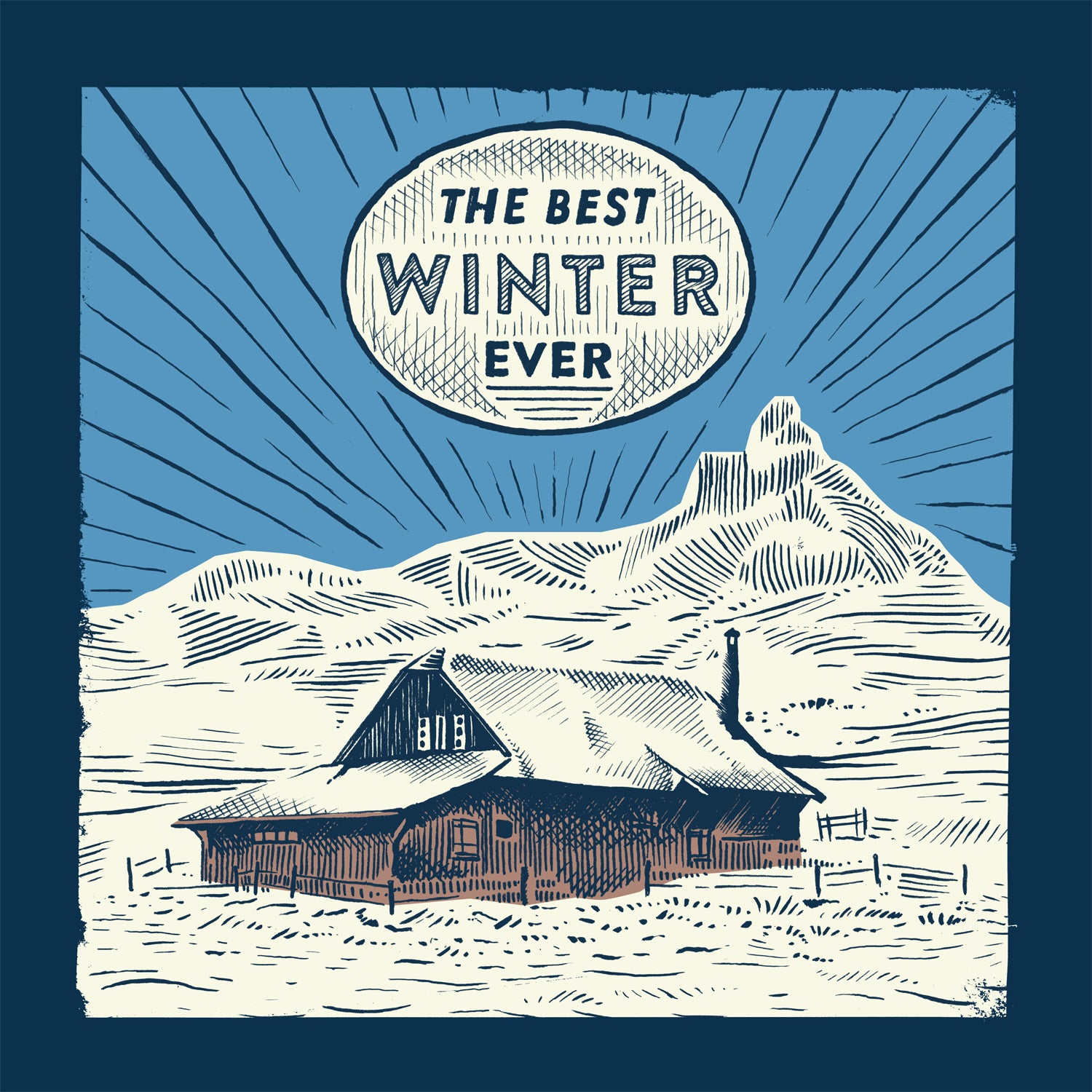Lead the Pack
What to do when it’s dark and frigid outside? We have some ideas. For starters, try building a backyard sauna, mixing up a powerful cocktail, joining a mountain race, creating the perfect cabin fire, learning to dogsled, swinging a war hammer, kicking back with a classic adventure book, or escaping to a tropical island. Just hurry up—spring will be here before you know it.
—
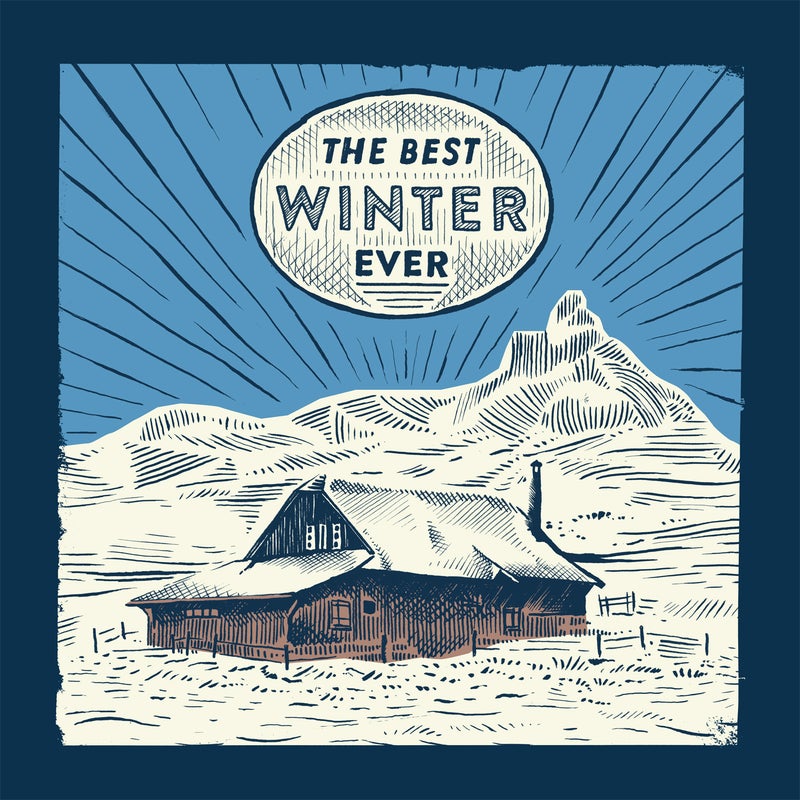
What to do when it's dark and frigid outside? We have some ideas. For starters, try building a backyard sauna, mixing up a powerful cocktail, joining a mountain race, creating the perfect cabin fire, learning to dogsled, swinging a war hammer, kicking back with a classic adventure book, or escaping to a tropical island. Just hurry up—spring will be here before you know it.
—
Lead the Pack
From December through March, , in Ely, Minnesota, runs five-night dogsled camping trips for beginners in the frozen-over , doling out the fundamentals of mushing and winter camping. Groups are limited to six students, with two per sled, and a pair of guides skiing alongside the teams of Inuit freight dogs. You’ll start with basic driving skills on gentle straightaways, but by the end of the class you’ll be harnessing your team and shouting commands on backcountry trails. At night, guides prepare a blazing fire and hearty stew—dogsledding is like car camping, there’s no need to pack light. From $1,075.
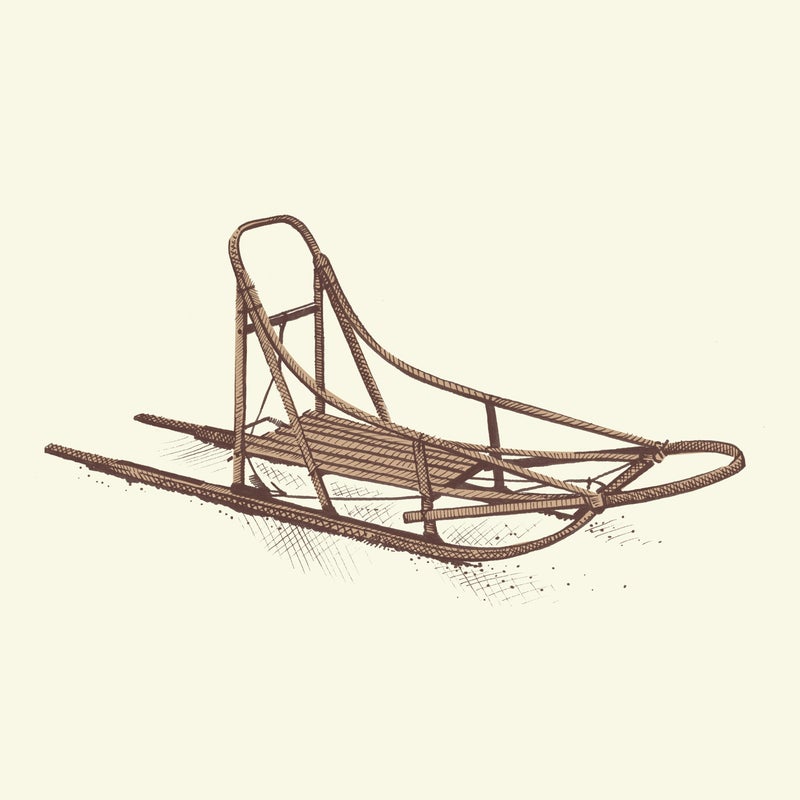
From December through March, , in Ely, Minnesota, runs five-night dogsled camping trips for beginners in the frozen-over , doling out the fundamentals of mushing and winter camping. Groups are limited to six students, with two per sled, and a pair of guides skiing alongside the teams of Inuit freight dogs. You’ll start with basic driving skills on gentle straightaways, but by the end of the class you’ll be harnessing your team and shouting commands on backcountry trails. At night, guides prepare a blazing fire and hearty stew—dogsledding is like car camping, there’s no need to pack light. From $1,075.
(Jon Schubert)Read a Riveting ���ϳԹ��� Tale…
The Classic: , James Salter’s 1979 novel about a disaffected climber seeking personal betterment in the Alps, offers haunting descriptions of alpine terrain and the psyche of the obsessive climbing bum. A sample: “He saw himself at forty, working for wages, walking home in the dusk. The windows of restaurants, the headlights of cars, shops just being closed, all of it part of a world he had never surrendered to, that he would defy to the end.”
The Lost Classic: In Corey Ford’s , an expedition sets sail for America, finds Alaska, then runs aground in the Commander Islands on the way back. Winter sets in, men die, foxes gnaw on frozen corpses. The survivors tear down their vessel, build a smaller one, and head for home.
The Modern Classic: ���ϳԹ��� contributing editor Kevin Fedarko’s may ostensibly be about an illicit and rollicking boat ride down the flood-swollen Colorado River, but it covers everything from natural history to modern dams.

The Classic: , James Salter’s 1979 novel about a disaffected climber seeking personal betterment in the Alps, offers haunting descriptions of alpine terrain and the psyche of the obsessive climbing bum. A sample: “He saw himself at forty, working for wages, walking home in the dusk. The windows of restaurants, the headlights of cars, shops just being closed, all of it part of a world he had never surrendered to, that he would defy to the end.”
The Lost Classic: In Corey Ford’s , an expedition sets sail for America, finds Alaska, then runs aground in the Commander Islands on the way back. Winter sets in, men die, foxes gnaw on frozen corpses. The survivors tear down their vessel, build a smaller one, and head for home.
The Modern Classic: ���ϳԹ��� contributing editor Kevin Fedarko’s may ostensibly be about an illicit and rollicking boat ride down the flood-swollen Colorado River, but it covers everything from natural history to modern dams.
(Jon Schubert)…Or Watch One
The Buddy Flick: , the documentary about Yvon Chouinard, , and ’s 1968 pilgrimage to Patagonia, celebrates a blithe, simple spirit of youthful adventure. Upon arriving in Argentina in a battered van, the crew pick up their climbing buddy Chris Jones on the side of a lonesome highway, per a prearranged plan. Watching it, you can’t help but wish that’s the way the world still worked.
The Cult Favorite: may be the worst Bond film ever made. The plot is forgettable—as in, we actually can’t remember it—and so is the lead actor, a vanilla beefcake named George Lazenby who decided, midway through shooting, that he would never again play 007. But this dud contains the first Bond ski chase, in which a stunt double evades machine-gun fire, loses a ski, nails a one-footed huck, and then takes out the last of the approximately 423 bad guys who have been chasing him. And he does all of it in a knit cap.
The Heart-Warmer: Despite the silly science and laughable anthropomorphism, 1983’s , an adaptation of Farley Mowat’s sympathetic “” (it was revealed to be mostly fiction) of a rookie scientist studying wolves and confronting rapacious fur hunters, still holds up three decades later. The nerd goes into the wild and becomes a man!

The Buddy Flick: , the documentary about Yvon Chouinard, , and ’s 1968 pilgrimage to Patagonia, celebrates a blithe, simple spirit of youthful adventure. Upon arriving in Argentina in a battered van, the crew pick up their climbing buddy Chris Jones on the side of a lonesome highway, per a prearranged plan. Watching it, you can’t help but wish that’s the way the world still worked.
The Cult Favorite: may be the worst Bond film ever made. The plot is forgettable—as in, we actually can’t remember it—and so is the lead actor, a vanilla beefcake named George Lazenby who decided, midway through shooting, that he would never again play 007. But this dud contains the first Bond ski chase, in which a stunt double evades machine-gun fire, loses a ski, nails a one-footed huck, and then takes out the last of the approximately 423 bad guys who have been chasing him. And he does all of it in a knit cap.
The Heart-Warmer: Despite the silly science and laughable anthropomorphism, 1983’s , an adaptation of Farley Mowat’s sympathetic “” (it was revealed to be mostly fiction) of a rookie scientist studying wolves and confronting rapacious fur hunters, still holds up three decades later. The nerd goes into the wild and becomes a man!
(Jon Schubert)Love the Crock Pot
Fat skis notwithstanding, a slow cooker is perhaps the most game-changing winter adventure tool of them all. Hear me out on this. Before heading out the door to punish yourself in the cold for eight hours, doing whatever it is you like to do when most of the country is watching football and drinking beer, you throw a couple of cheap steaks, half a bottle of red wine, and some root vegetables into a Crock-Pot on the counter. You turn the dial to low. You go do your thing—and you go all-out, because you know that when it’s over, you will not come limping home, frostbitten and aching, to paw around the refrigerator for something to throw in the microwave, or to order a pizza that will arrive 30 minutes after you’ve polished off a box of Wheat Thins. No, you will come home to the sweet smell of victory, piping hot and ready to be savored—plus, if you’re lucky, the fourth quarter of a decent game.

Get Heated
Sometimes the best way to beat the cold is to warm the liver.
Brandy Old Fashioned
, Madison, Wisconsin
The brandy makes this sweeter than the more common whiskey old fashioned and does a better job of warming you up, whether you’re defrosting after a skate-skiing session or watching the Packers at Lambeau Field.
1. In a tumbler, muddle a raw sugar cube, a destemmed cherry, an orange slice, and four dashes of Angostura bitters. Add a dash of Sprite and stir until the sugar is fully dissolved.
2. Add a chunk of ice and two ounces of Korbel brandy.
3. Garnish with another cherry and orange slice and serve.

Sometimes the best way to beat the cold is to warm the liver.
Brandy Old Fashioned
, Madison, Wisconsin
The brandy makes this sweeter than the more common whiskey old fashioned and does a better job of warming you up, whether you’re defrosting after a skate-skiing session or watching the Packers at Lambeau Field.
1. In a tumbler, muddle a raw sugar cube, a destemmed cherry, an orange slice, and four dashes of Angostura bitters. Add a dash of Sprite and stir until the sugar is fully dissolved.
2. Add a chunk of ice and two ounces of Korbel brandy.
3. Garnish with another cherry and orange slice and serve.
Get Cozy Like a Gentleman
Those crappy slip-ons you got for Christmas a few years ago that get clammy and make you look like Archie Bunker? You can do better. These ($95) are 100 percent wool to wick away moisture and resist funk, and the leather outsoles are durable enough to handle quick dashes to the car.
As for layering up top: Before there were fancy fleeces and merino midlayers, there were turtlenecks and heavy-knit wool sweaters. While the former are mostly extinct, the latter continue to evolve. The ($198) updates the classic style with a slim fit and a bit of linen to make it more breathable.
And now that the whole lumbersexual look has become a hipster uniform, how about slipping into something more comfortable than grandpa’s scratchy wool jacket? Isaora’s slim-fitting, down-stuffed ($265) is just 8.3 ounces, remarkably warm, and up for just about any cold-weather adventure, but still understated enough for everyday wear.
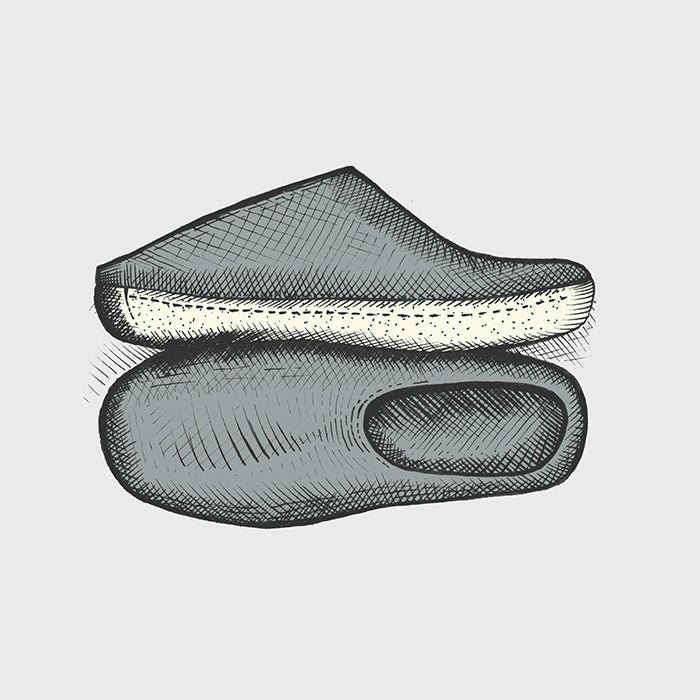
Those crappy slip-ons you got for Christmas a few years ago that get clammy and make you look like Archie Bunker? You can do better. These ($95) are 100 percent wool to wick away moisture and resist funk, and the leather outsoles are durable enough to handle quick dashes to the car.
As for layering up top: Before there were fancy fleeces and merino midlayers, there were turtlenecks and heavy-knit wool sweaters. While the former are mostly extinct, the latter continue to evolve. The ($198) updates the classic style with a slim fit and a bit of linen to make it more breathable.
And now that the whole lumbersexual look has become a hipster uniform, how about slipping into something more comfortable than grandpa's scratchy wool jacket? Isaora's slim-fitting, down-stuffed ($265) is just 8.3 ounces, remarkably warm, and up for just about any cold-weather adventure, but still understated enough for everyday wear.
(Jon Schubert)Plan a Hut Trip
Our favorite is the privately run , a stone chalet fashioned from a reconstituted 100-year-old Wisconsin barn. A mellow four-mile skin away from Highway 550, near the top of Red Mountain Pass in between Silverton and Ouray, it’s perched beneath endless powder bowls, steep chutes, and gladed terrain that skis well even when the snowpack is unstable. Opus proprietor and architect “Ophir Bob” Kingsley and his staff provide meals and even do the dishes for $80 per night per person. The best way to do Opus is to find 15 friends and fill the thing. Just remember to bring extra coffee: Bob limits it to one cup per person, so you don’t end up sitting around the table all day. You’ve got better things to do.
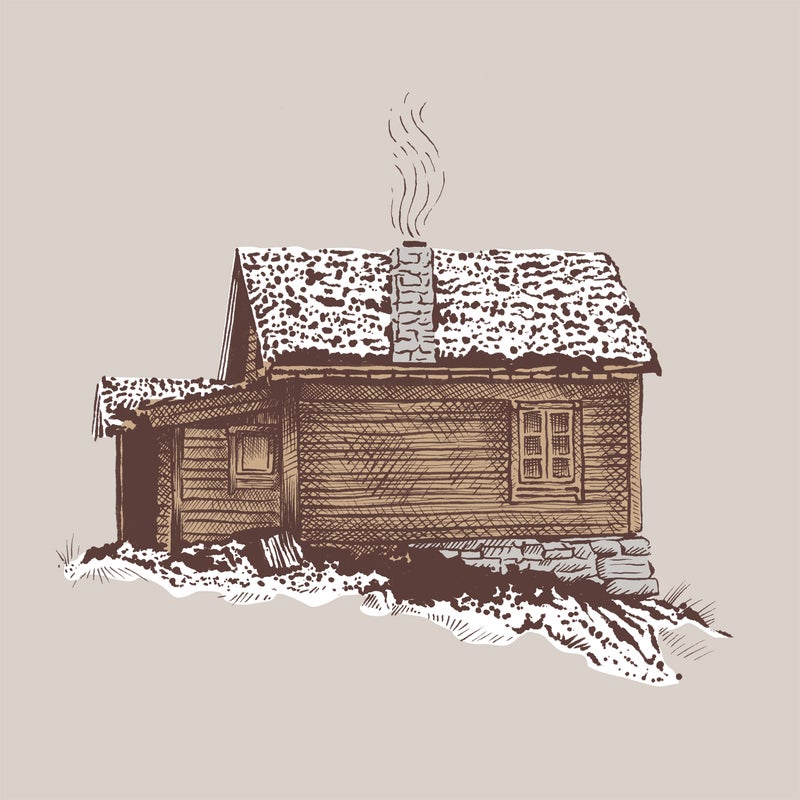
Our favorite is the privately run , a stone chalet fashioned from a reconstituted 100-year-old Wisconsin barn. A mellow four-mile skin away from Highway 550, near the top of Red Mountain Pass in between Silverton and Ouray, it’s perched beneath endless powder bowls, steep chutes, and gladed terrain that skis well even when the snowpack is unstable. Opus proprietor and architect “Ophir Bob” Kingsley and his staff provide meals and even do the dishes for $80 per night per person. The best way to do Opus is to find 15 friends and fill the thing. Just remember to bring extra coffee: Bob limits it to one cup per person, so you don’t end up sitting around the table all day. You’ve got better things to do.
(Jon Schubert)Build a Bomber Igloo
Whether you’re looking for a snowy Saturday-afternoon diversion with the kids or aiming to step up your winter-camping skills, the answer is the same: igloo! It’s roomier and more civilized than a snow cave, requires less of the white stuff to build, and is much warmer than a four-season tent. The only downside? Creating one requires a bit of know-how. That’s why we love the ($180), a simple but ingenious invention by Colorado-based Ed Huesers, a.k.a. . Essentially a plastic mold attached to a telescoping pole, the sub-five-pound Icebox makes it easier to form perfect blocks and erect a dome that sleeps five and is tall enough to stand up in. Huesers’s instructions read like a flight manual, but here’s the basic idea.
1. Start by staking the pivoting base of the Icebox pole in the center of your planned igloo, extending it to the maximum length, and clipping it to the mold. To create a block, dump snow into the mold and pack it down. For each new block, lift and pivot the mold. Shape the first three blocks into a ramp, so they’ll remain intact as you add more.
2. At the start of each new level, shorten the pole one setting. Scrape away any excess snow that falls onto the floor of the igloo so it stays level.
3. After five levels, carve a tunnel-like entrance, with the top edge just above floor level. (This will help keep the igloo warm, too.)
4. Near the top, remove the outside panel and pile snow onto the open mold. To make the roof, remove the side of the mold so it becomes a flat tray, then pile and pack snow on top. The walls are already free-standing—they freeze themselves in place.
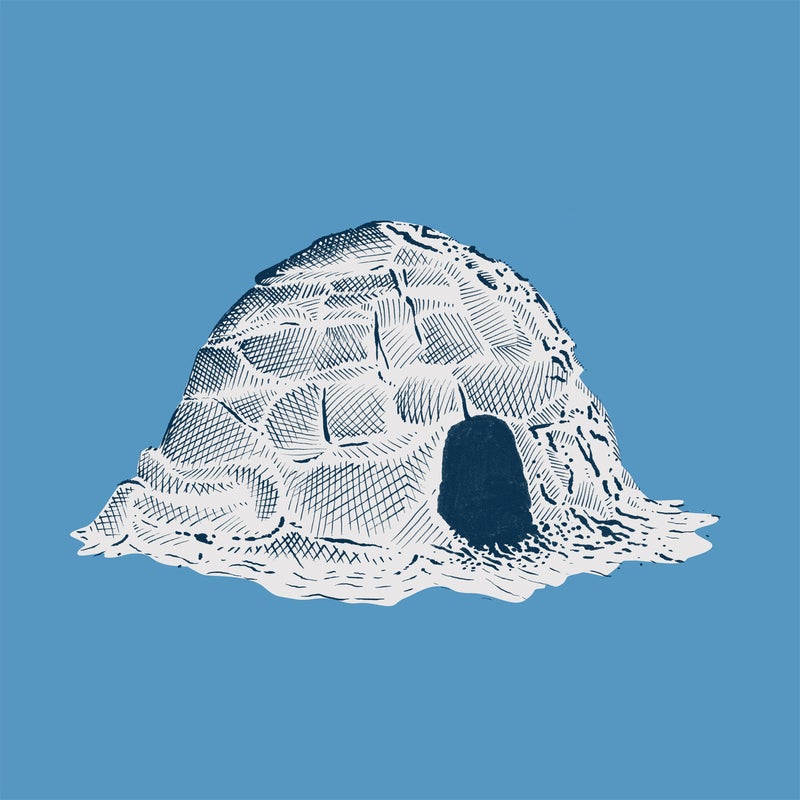
Whether you’re looking for a snowy Saturday-afternoon diversion with the kids or aiming to step up your winter-camping skills, the answer is the same: igloo! It’s roomier and more civilized than a snow cave, requires less of the white stuff to build, and is much warmer than a four-season tent. The only downside? Creating one requires a bit of know-how. That’s why we love the ($180), a simple but ingenious invention by Colorado-based Ed Huesers, a.k.a. . Essentially a plastic mold attached to a telescoping pole, the sub-five-pound Icebox makes it easier to form perfect blocks and erect a dome that sleeps five and is tall enough to stand up in. Huesers’s instructions read like a flight manual, but here’s the basic idea.
1. Start by staking the pivoting base of the Icebox pole in the center of your planned igloo, extending it to the maximum length, and clipping it to the mold. To create a block, dump snow into the mold and pack it down. For each new block, lift and pivot the mold. Shape the first three blocks into a ramp, so they’ll remain intact as you add more.
2. At the start of each new level, shorten the pole one setting. Scrape away any excess snow that falls onto the floor of the igloo so it stays level.
3. After five levels, carve a tunnel-like entrance, with the top edge just above floor level. (This will help keep the igloo warm, too.)
4. Near the top, remove the outside panel and pile snow onto the open mold. To make the roof, remove the side of the mold so it becomes a flat tray, then pile and pack snow on top. The walls are already free-standing—they freeze themselves in place.
(Jon Schubert)Play Some Pond Hockey
The sport is famous for being difficult, but when played properly—on a frozen pond during the coldest days of the year—hockey rewards anyone who shows up. Even a first-timer feels the thrill of speed. And with the sun just over the horizon all day, the light is always perfect. Little is required other than skates, sticks, and a puck. (And you can make do without any of that: broom ball, the equipment for which is self explanatory, is a worthy Plan B.) Boots placed a few feet apart work for goals, but if you want to get fancy, put a board over a couple of paint cans. That keeps the puck down and your teeth where they belong: chattering in your mouth.
As for the ice, the Minnesota Department of Natural Resources is one of many agencies that publish a . It recommends four clear inches of ice for walking around on or fishing. That should suffice for a game. (Got a foot of ice? You can drive your pickup on it and tailgate.) Like most worthwhile adventures, pond hockey has you enjoying what would otherwise be miserable conditions. Nature tries to freeze your ass off. But you don’t care. Instead, you laugh, thank her for it, and keep on playing until the light fades and you can barely see the puck.
—Bryant Urstadt

As for the ice, the Minnesota Department of Natural Resources is one of many agencies that publish a . It recommends four clear inches of ice for walking around on or fishing. That should suffice for a game. (Got a foot of ice? You can drive your pickup on it and tailgate.) Like most worthwhile adventures, pond hockey has you enjoying what would otherwise be miserable conditions. Nature tries to freeze your ass off. But you don’t care. Instead, you laugh, thank her for it, and keep on playing until the light fades and you can barely see the puck.
—Bryant Urstadt (Jon Schubert)
Eat a Hero’s Breakfast
In 2010, Canadian backcountry skier Greg Hill climbed and carved two million vertical feet over 270 days. On most of them, he powered up in the morning with two servings of this simple concoction, which he calls Bird in the Nest. “You get a little bit of everything—carbs, fats, and proteins—so it’s a good start to the day,” says Hill. “Plus, it has fried cheese!” Really hungry? Add Hill’s power smoothie. —Erin Beresini
Bird in the Nest
1 pat butter
1 slice whole-wheat or sourdough bread*
1 egg
Shredded cheddar cheese to taste
1. Heat a frying
pan and add the butter to melt.
2. Cut a hole in the center of the bread and place in the pan.
3. Crack the egg and pour into the hole.
4. Sprinkle the cheese over the egg.
5. Fry until the yolk is no longer runny.
*Variation: Do it in a bagel! (Just cut the hole bigger first.)
Power Smoothie
1 banana, a handful of blueberries, 1 cup vanilla yogurt, 1 scoop protein powder (Hill likes Vega’s All-In-One Nutritional Shake), 2 percent milk to your preferred consistency
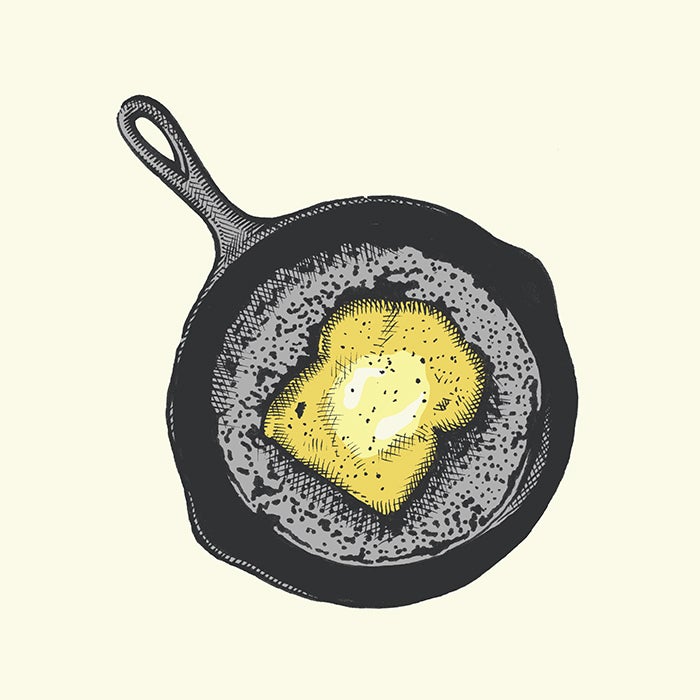
In 2010, Canadian backcountry skier Greg Hill climbed and carved two million vertical feet over 270 days. On most of them, he powered up in the morning with two servings of this simple concoction, which he calls Bird in the Nest. “You get a little bit of everything—carbs, fats, and proteins—so it’s a good start to the day,” says Hill. “Plus, it has fried cheese!” Really hungry? Add Hill’s power smoothie. —Erin Beresini
Bird in the Nest
1 pat butter
1 slice whole-wheat or sourdough bread*
1 egg
Shredded cheddar cheese to taste
1. Heat a frying
pan and add the butter to melt.
2. Cut a hole in the center of the bread and place in the pan.
3. Crack the egg and pour into the hole.
4. Sprinkle the cheese over the egg.
5. Fry until the yolk is no longer runny.
*Variation: Do it in a bagel! (Just cut the hole bigger first.)
Power Smoothie
1 banana, a handful of blueberries, 1 cup vanilla yogurt, 1 scoop protein powder (Hill likes Vega’s All-In-One Nutritional Shake), 2 percent milk to your preferred consistency
(Jon Schubert)Discover the Ultimate Warming Tool
For a number of years, I found myself getting a little less excited about the arrival of winter. I love to ski and run in the delightfully eerie silence of fresh snow, but here’s the deal: I get cold. My fingers and toes seem to suffer more than friends’, even when encased in inch-thick socks and Siberia-ready gloves. Recently, though, I discovered a secret weapon. On a backcountry ski outing with a group of friends, it was four degrees when we started out from the trailhead. By the time we finished our first climb, my hands and toes were gone and all my energy had been used to heat my body. We stopped in a grove of trees to strip off our climbing skins, and I wondered if I could handle the moderate, powdery pitch below. That’s when Tyler, an always-prepared Air Force captain, whipped out his thermos. “Coffee?” he asked, taking notice of my disheveled state. A few sips of vacuum-sealed joe later, warmth was emanating from my core. Forget heated boots and chemical hand warmers—a hot drink is the ultimate cold-weather equalizer.
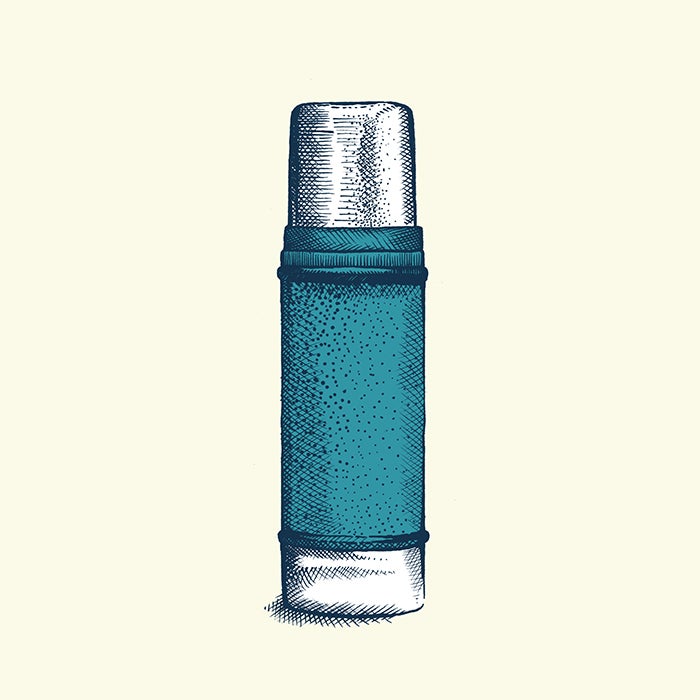
Construct a Backwoods Sauna
Author and wildlife biologist has spent months at a stretch trekking across North America’s wild places, including a 2,100-mile odyssey from Yellowstone to the Yukon. His go-to backcountry recovery tool? A makeshift sauna. Heuer prefers to build his “by a river for refreshing plunges,” but we’ve found it works just fine in the yard. Here’s how he does it.
1. Stick both ends of a long, supple branch (willows work best) in the ground to form an arch. Repeat with more branches until you have a dome.
2. Dig a pit in the center, then drape a tent fly or a plastic sheet over the branches. Pile sand or rocks around the edges to seal off the space.
3. Gather several large stones and heat them over a fire outside the sauna for about 20 minutes. (Don’t heat rocks that have been submerged in water—when moisture inside expands, they can explode.) Use a shovel or cooking pot to move the heated rocks to your sauna pit.
4. Bring a water bottle into the sauna and seal the fly. Drip the water over the stones. Relax. It’ll heat up quickly.
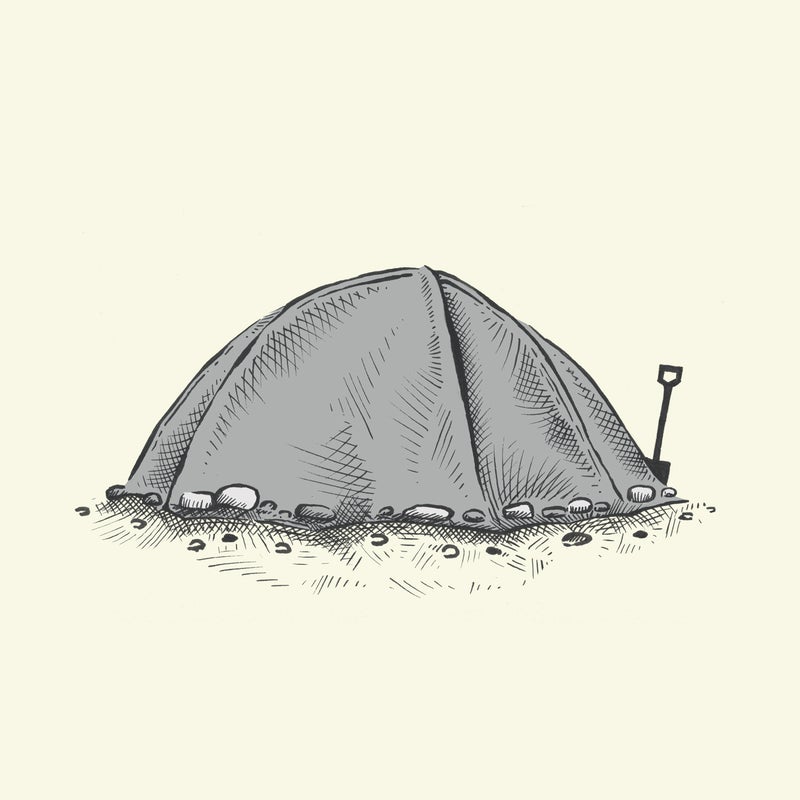
Author and wildlife biologist has spent months at a stretch trekking across North America’s wild places, including a 2,100-mile odyssey from Yellowstone to the Yukon. His go-to backcountry recovery tool? A makeshift sauna. Heuer prefers to build his “by a river for refreshing plunges,” but we’ve found it works just fine in the yard. Here’s how he does it.
1. Stick both ends of a long, supple branch (willows work best) in the ground to form an arch. Repeat with more branches until you have a dome.
2. Dig a pit in the center, then drape a tent fly or a plastic sheet over the branches. Pile sand or rocks around the edges to seal off the space.
3. Gather several large stones and heat them over a fire outside the sauna for about 20 minutes. (Don’t heat rocks that have been submerged in water—when moisture inside expands, they can explode.) Use a shovel or cooking pot to move the heated rocks to your sauna pit.
4. Bring a water bottle into the sauna and seal the fly. Drip the water over the stones. Relax. It’ll heat up quickly.
(Jon Schubert)Ride Anywhere
Like the snurfers from the seventies, Jones Snowboards’ all-wood ($349) gets back to the sport’s roots. No bindings or special boots required: just hop on this stubby, beginner-friendly board—angled metal plates help snug up against your winter hiking boots—and ride. The best part? Its surfboard-inspired shape is equally adept at slashing through deep powder as it is jibbing in the backyard. Comes with a surf-style leash.
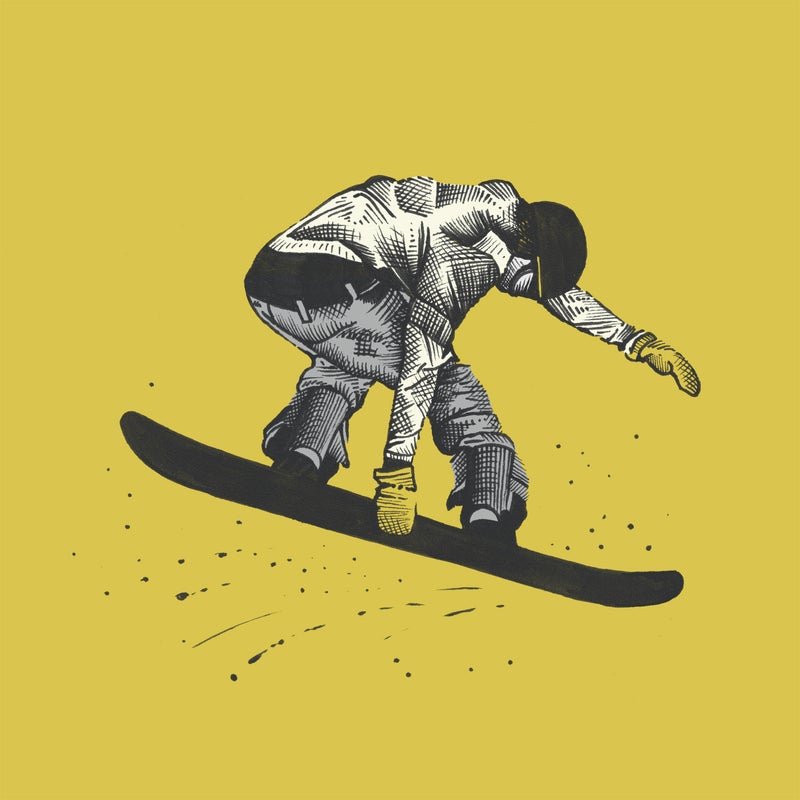
Like the snurfers from the seventies, Jones Snowboards’ all-wood ($349) gets back to the sport’s roots. No bindings or special boots required: just hop on this stubby, beginner-friendly board—angled metal plates help snug up against your winter hiking boots—and ride. The best part? Its surfboard-inspired shape is equally adept at slashing through deep powder as it is jibbing in the backyard. Comes with a surf-style leash.
(Jon Schubert)Sleep with the Fishes
Floating some 800 feet off the northern tip of Pemba Island in the Indian Ocean, the ’s underwater room is straight out of The Life Aquatic with Steve Zissou. Technically, it’s a two-person suite, but it’s best understood as the world’s dreamiest floating cabana. Designed by Swedes and built from local hardwood, it features a roof deck, a middle floor with a bathroom and lounging and dining areas, and a bedroom that plunges 13 feet below the surface, affording a nearly 360-degree view of reef life. All you need are the matching red beanies. $1,500 including meals.

Floating some 800 feet off the northern tip of Pemba Island in the Indian Ocean, the ’s underwater room is straight out of The Life Aquatic with Steve Zissou. Technically, it’s a two-person suite, but it’s best understood as the world’s dreamiest floating cabana. Designed by Swedes and built from local hardwood, it features a roof deck, a middle floor with a bathroom and lounging and dining areas, and a bedroom that plunges 13 feet below the surface, affording a nearly 360-degree view of reef life. All you need are the matching red beanies. $1,500 including meals.
(Jon Schubert)Sacrifice Your Dignity for Cool Earmuffs
I’ve never been an earmuffs guy. There are certain people who can pull them off—funny-looking old dudes who don’t care, fun-loving young women who do. The rest of us? Let’s just say it’s hard to be taken seriously in them. (The bouncer isn’t going to let you into the club, if you know what I’m saying.) But, as with any general rule, there are exceptions. If you’re like me and you prefer to run outside even when your eyelashes freeze—and you sometimes listen to music while doing so—then speakerized earmuffs like ($80) are totally OK. Not because they look cooler than other earmuffs (they don’t) but because it just won’t matter. You’ll be stomping along at a good clip, your ears warm and enveloped by your favorite tunes. Incidentally, the same rule applies to running tights. As long as it’s below 32 degrees and you can keep up a good pace, it’s completely acceptable to wear them. Tights and earmuffs? Only if you’re really, really fast—or a funny-looking old dude.
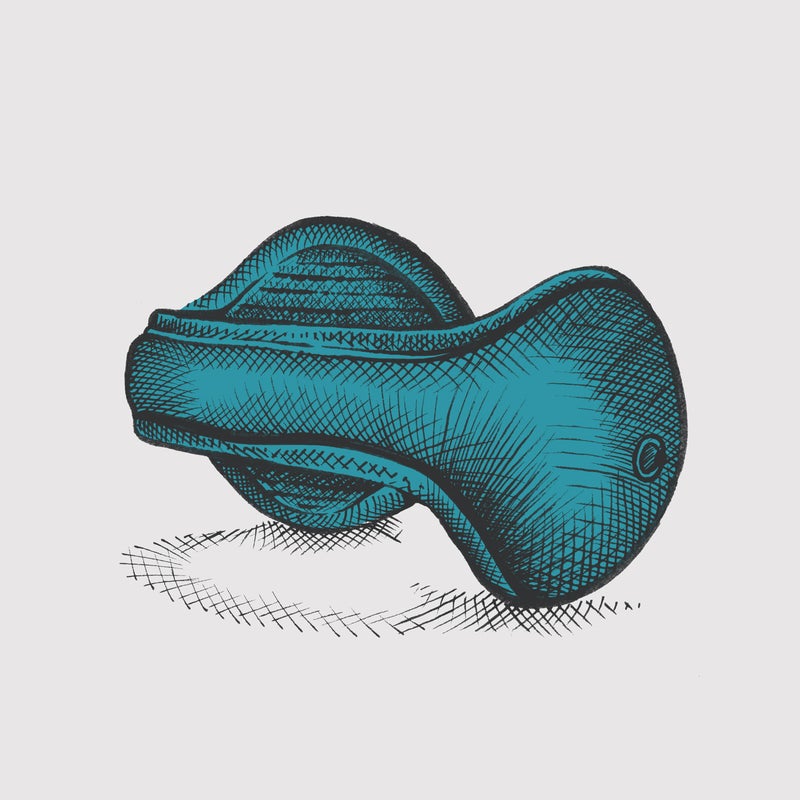
Take Care of Your Mug
Winter adventures can permanently leatherize your face. Low humidity sucks out moisture, high altitude increases sun exposure, and cold wind chafes. Add dry indoor heat and you’re on your way to looking like Keith Richards. Below, , an expert in mountain skin care with practices near Vail and Aspen, Colorado, shares her tips for avoiding lasting damage.
Problem: Sunburn
Fix: Zinc-oxide-based sunscreens, which offer the best protection from burns and skin cancer by reflecting ultraviolet light. “If you put ArmorAll on the dashboard of your car, you’ll get some protection,” Nern explains. “But if you put a reflector in the window, you’ll get better protection.” Nern recommends the Swiss brand for affordable, good-quality SPF.
Bonus tip: Forgot your sunscreen? The dust from an aspen tree has an SPF of five. “Rub your hands on the tree, then rub it on your skin,” Nern says.
Problem: Dryness
Fix: Keep a moisturizer in the shower and put it on just after you’ve toweled off, when your skin is still damp. “The exfoliating enzymes in your skin work better with moisture.” She recommends picking a lotion with ceramides—fats that occur naturally in the skin’s outer layer and help seal in moisture—for more rapid healing. ($28) is a little pricey, but it’s the best stuff we’ve found, and you can use
it on both your face and body.
Problem: Windburn
Fix: A bandanna or ski mask. Yes, sunscreen shields you from wind, too, but nothi

Winter adventures can permanently leatherize your face. Low humidity sucks out moisture, high altitude increases sun exposure, and cold wind chafes. Add dry indoor heat and you’re on your way to looking like Keith Richards. Below, , an expert in mountain skin care with practices near Vail and Aspen, Colorado, shares her tips for avoiding lasting damage.
Problem: Sunburn
Fix: Zinc-oxide-based sunscreens, which offer the best protection from burns and skin cancer by reflecting ultraviolet light. “If you put ArmorAll on the dashboard of your car, you’ll get some protection,” Nern explains. “But if you put a reflector in the window, you’ll get better protection.” Nern recommends the Swiss brand for affordable, good-quality SPF.
Bonus tip: Forgot your sunscreen? The dust from an aspen tree has an SPF of five. “Rub your hands on the tree, then rub it on your skin,” Nern says.
Problem: Dryness
Fix: Keep a moisturizer in the shower and put it on just after you’ve toweled off, when your skin is still damp. “The exfoliating enzymes in your skin work better with moisture.” She recommends picking a lotion with ceramides—fats that occur naturally in the skin’s outer layer and help seal in moisture—for more rapid healing. ($28) is a little pricey, but it’s the best stuff we’ve found, and you can use
it on both your face and body.
Problem: Windburn
Fix: A bandanna or ski mask. Yes, sunscreen shields you from wind, too, but nothi
Fight the Blues
Keeping spirits up during the coldest, darkest days can be challenging. Just ask British physician , who spent a winter at Antarctica’s to study how astronauts might someday tolerate a mission to Mars. He and 12 others were isolated at the facility for nine months, until the weather warmed up enough to allow aircraft to reach them. The experience gave Kumar keen insights on how to avoid a Netflix and schnapps death spiral during a vicious cold snap.
Stay busy. “Keeping yourself occupied is massively important. I found that people who had less structured routines and lighter workloads struggled the most.”
Pick up a hobby. “Creativity releases the mind from its constriction. I brought a banjo with me, though I can’t recommend that. A banjo played badly isn’t good for group morale.”
Don’t go it alone. “The people who isolate themselves start to show the psychological parameters of stress. We got the team together every Saturday for board games and films, no matter what.”
Remember to laugh. “The ones who took themselves too seriously really had trouble. For a joke, we froze one guy’s Brazil guidebook in a block of ice, which went over pretty well considering the circumstances.”
Exercise daily. “Laziness increases the process of mental degradation. And the movement will help you sleep better, too.”
Go outside. “I went out every single day that winter. It keeps you moving and keeps you sane.”
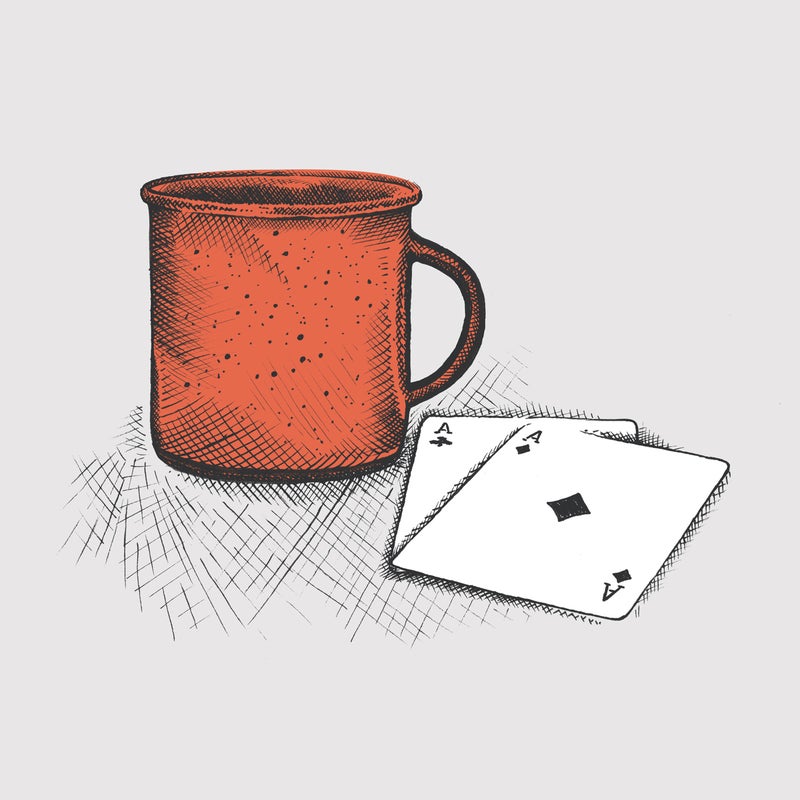
Keeping spirits up during the coldest, darkest days can be challenging. Just ask British physician , who spent a winter at Antarctica’s to study how astronauts might someday tolerate a mission to Mars. He and 12 others were isolated at the facility for nine months, until the weather warmed up enough to allow aircraft to reach them. The experience gave Kumar keen insights on how to avoid a Netflix and schnapps death spiral during a vicious cold snap.
Stay busy. “Keeping yourself occupied is massively important. I found that people who had less structured routines and lighter workloads struggled the most.”
Pick up a hobby. “Creativity releases the mind from its constriction. I brought a banjo with me, though I can’t recommend that. A banjo played badly isn’t good for group morale.”
Don’t go it alone. “The people who isolate themselves start to show the psychological parameters of stress. We got the team together every Saturday for board games and films, no matter what.”
Remember to laugh. “The ones who took themselves too seriously really had trouble. For a joke, we froze one guy’s Brazil guidebook in a block of ice, which went over pretty well considering the circumstances.”
Exercise daily. “Laziness increases the process of mental degradation. And the movement will help you sleep better, too.”
Go outside. “I went out every single day that winter. It keeps you moving and keeps you sane.”
(Jon Schubert)Start a Proper Fire
That guy with the balled-up newspaper, soot-covered snout, and annoyed wife? Don’t be him. Whether you’re at home or a rented mountain cabin, there’s a science to starting a fire that gets going fast and doesn’t need to be coaxed into maturity. Carl Miller, a houseman at on Oregon’s Mount Hood, builds fires in the monolithic central fireplace—which features six hearths on two stories and a 98-foot-tall chimney—“anytime there’s snow on the ground outside.” Here’s his fail-safe formula.
1. Beneath the fire grate, nestle a two-inch chunk of fire starter*—a flammable blend of paraffin and other materials—like ($9) in a bed of crumpled newspaper, then pile on a handful of wood splinters from your kindling stash.
2. Atop the grate, place a small log on either side of the starter pile. Bridge the two logs with large slats of kindling, then place a medium-size log on top of those. “The key is to pile bigger pieces on smaller pieces, because the smaller pieces light the bigger pieces,” says Miller.
3. Ignite with a match and enjoy.
*Don’t have fire starter handy? Miller advises squirting a little hand sanitizer on top of the kindling. “It goes right up,” he says. Another hack: a small pile of Cheetos or Doritos. “They burn like a candle,” he says. “I keep some in my pack in the backcountry, just in case.”
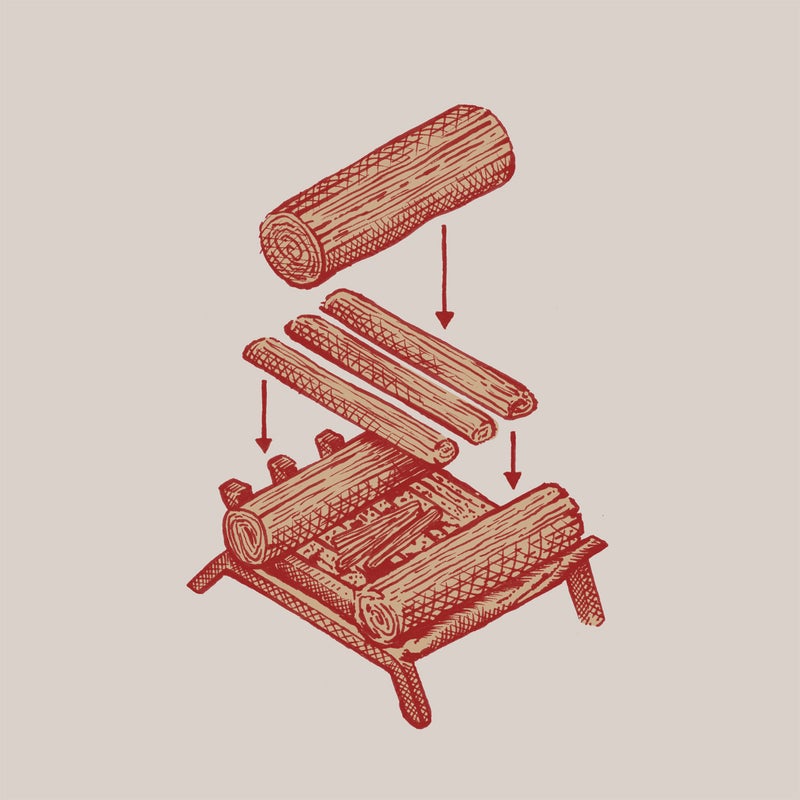
That guy with the balled-up newspaper, soot-covered snout, and annoyed wife? Don’t be him. Whether you’re at home or a rented mountain cabin, there’s a science to starting a fire that gets going fast and doesn’t need to be coaxed into maturity. Carl Miller, a houseman at on Oregon’s Mount Hood, builds fires in the monolithic central fireplace—which features six hearths on two stories and a 98-foot-tall chimney—“anytime there’s snow on the ground outside.” Here’s his fail-safe formula.
1. Beneath the fire grate, nestle a two-inch chunk of fire starter*—a flammable blend of paraffin and other materials—like ($9) in a bed of crumpled newspaper, then pile on a handful of wood splinters from your kindling stash.
2. Atop the grate, place a small log on either side of the starter pile. Bridge the two logs with large slats of kindling, then place a medium-size log on top of those. “The key is to pile bigger pieces on smaller pieces, because the smaller pieces light the bigger pieces,” says Miller.
3. Ignite with a match and enjoy.
*Don’t have fire starter handy? Miller advises squirting a little hand sanitizer on top of the kindling. “It goes right up,” he says. Another hack: a small pile of Cheetos or Doritos. “They burn like a candle,” he says. “I keep some in my pack in the backcountry, just in case.”
(Jon Schubert)

